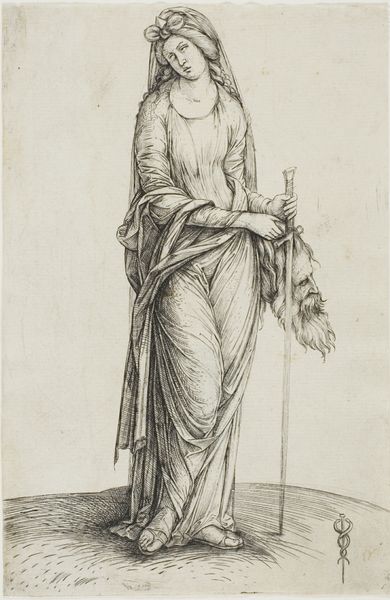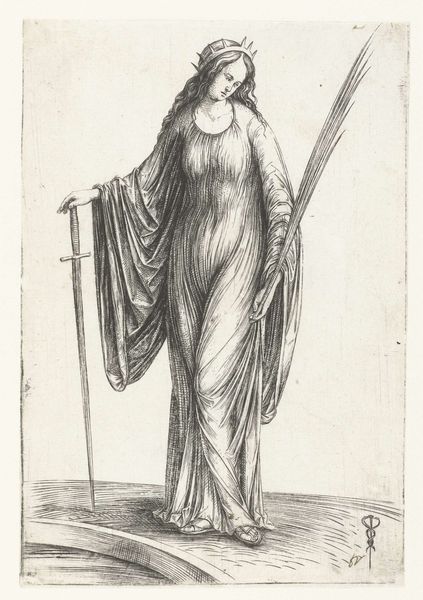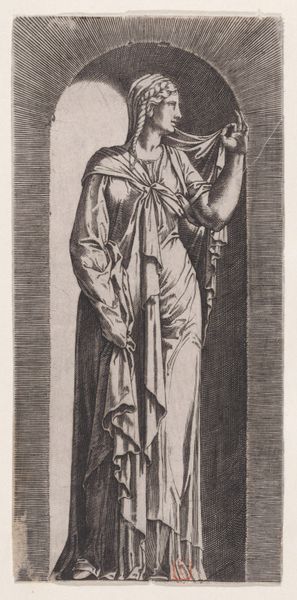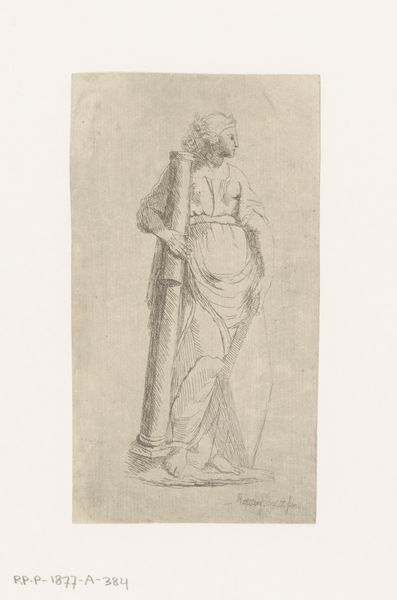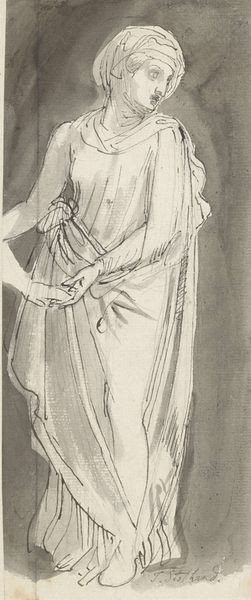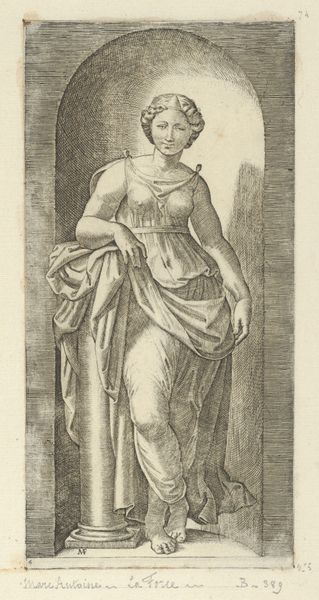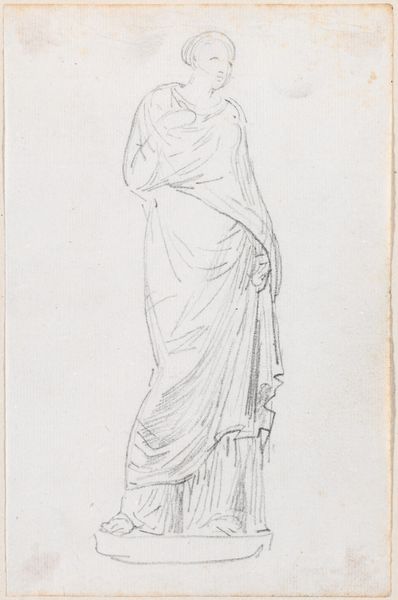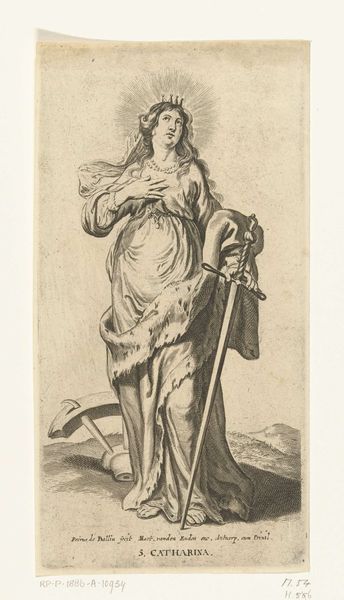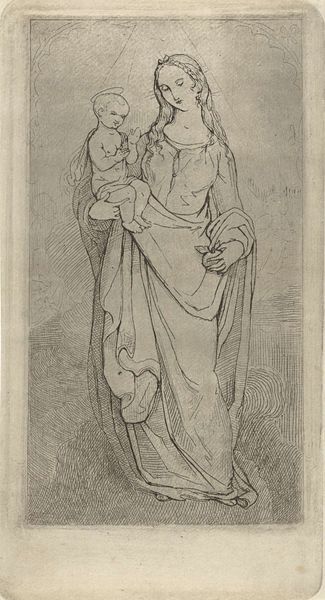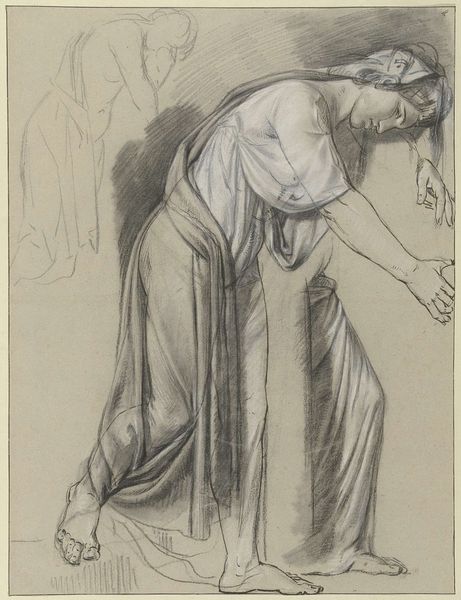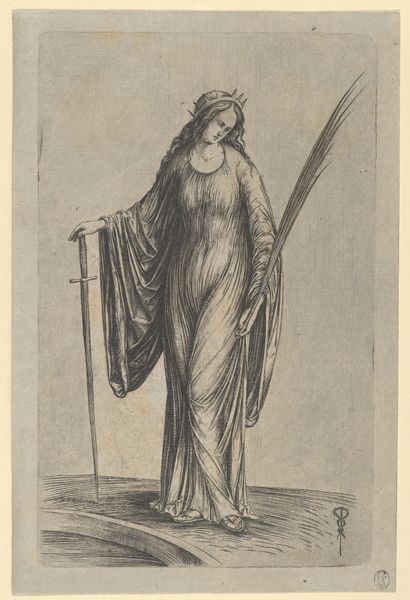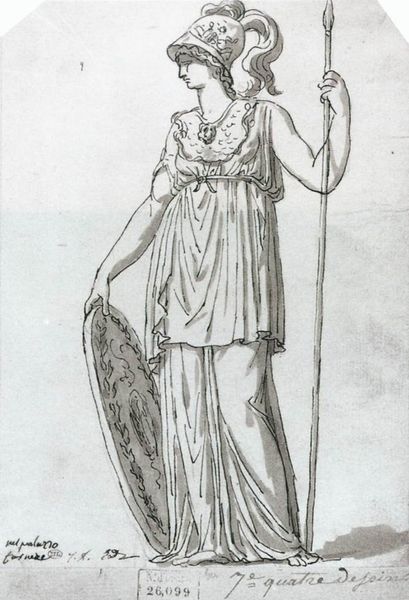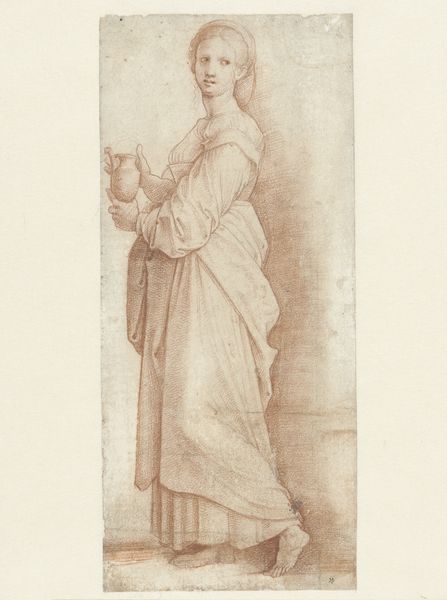
drawing, print, intaglio, dry-media, pencil
#
portrait
#
pencil drawn
#
drawing
# print
#
intaglio
#
pencil sketch
#
figuration
#
11_renaissance
#
dry-media
#
pencil drawing
#
pencil
#
history-painting
#
italian-renaissance
Dimensions: height 180 mm, width 81 mm
Copyright: Rijks Museum: Open Domain
Curator: Here we have Jacopo de' Barbari’s "Judith with the Head of Holofernes and Sword," likely completed sometime between 1460 and 1504. It's an intaglio print, a kind of drawing, really, done with pencil. What are your immediate impressions? Editor: There's a subdued, almost melancholic air about her. She carries the weight of her act—the lines are so delicate, giving a sense of introspection rather than triumph. Curator: Judith is a powerful figure, particularly as depicted during the Renaissance, offering a complex symbol of resistance, religious conviction, and, of course, gender. How do you see her role portrayed here, considering she is holding both the head and the weapon? Editor: The sword acts almost as a support, physically and symbolically. It speaks of what she needed to use, her necessary instrument of agency in a patriarchal world. And the head, it’s not a trophy but a heavy burden, its details rendering Holofernes almost pitiful. I am drawn to her gesture and expression - a deep introspective reflection in what she has been pushed to do to fight the oppressor. Curator: Indeed. Notice how Barbari utilizes classical forms and themes within the context of a religious narrative. It’s a potent mix of virtue and violence, presented at a time of great socio-political upheaval. We must look into those circumstances of vulnerability in which violence presents itself as a viable response. Editor: I agree. The drapery hints at classical sculpture, the symbol itself almost recalls depictions of saints with their attributes. It invites us to delve into those complexities and consider how cultural memory and historical continuity influence our perceptions of power. The contrast between Judith’s graceful stance and the gruesomeness of her deed also echoes the conflicts between the ideal and real that mark the era. Curator: A fantastic perspective. By looking at the symbol of Judith—her story, her contexts—we open dialogue around justice, power, and resistance that absolutely still resonates. Editor: It’s fascinating to consider how symbols, like Judith, evolve and shift over time, always holding a mirror up to our contemporary anxieties and aspirations.
Comments
No comments
Be the first to comment and join the conversation on the ultimate creative platform.
